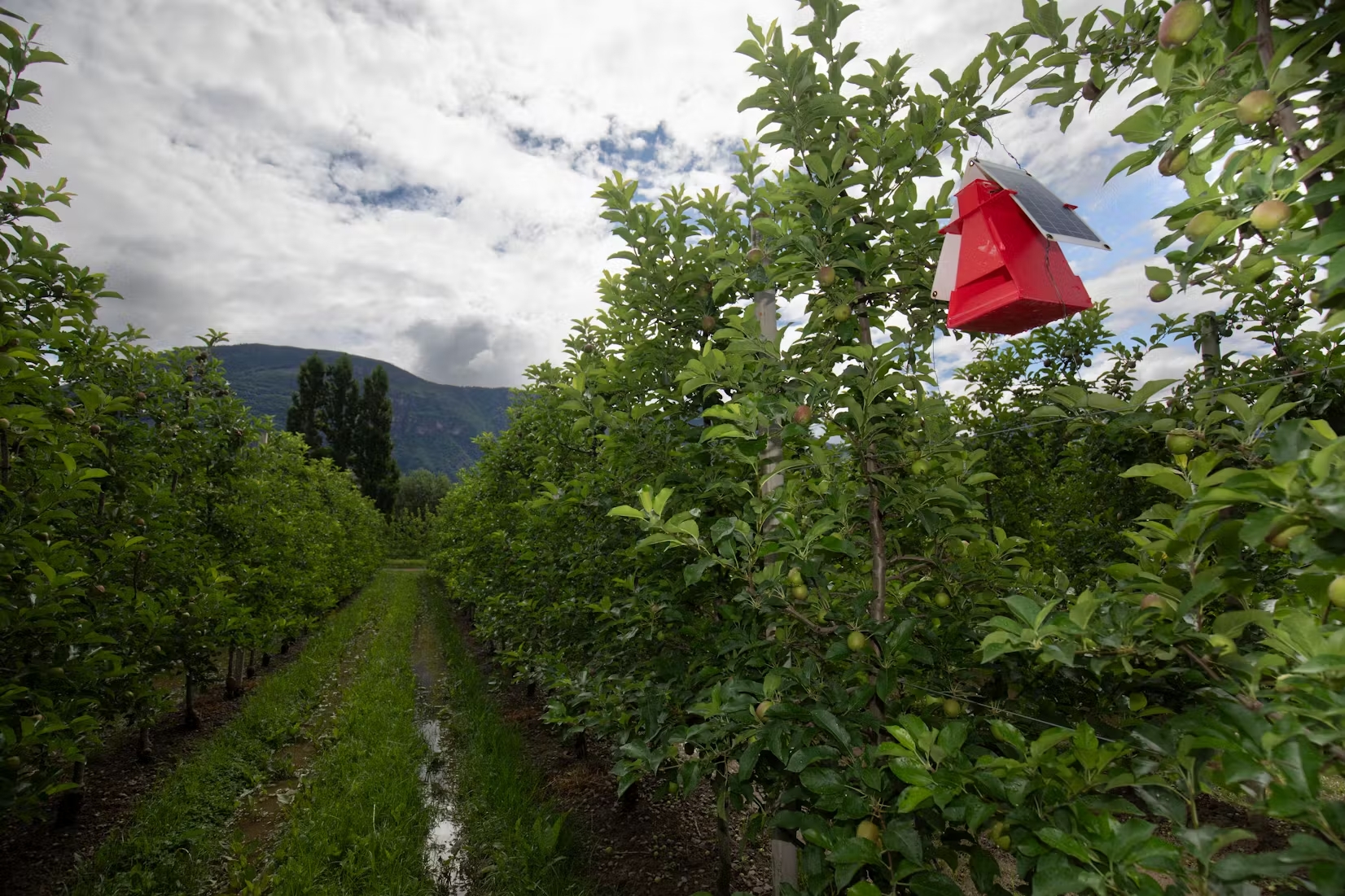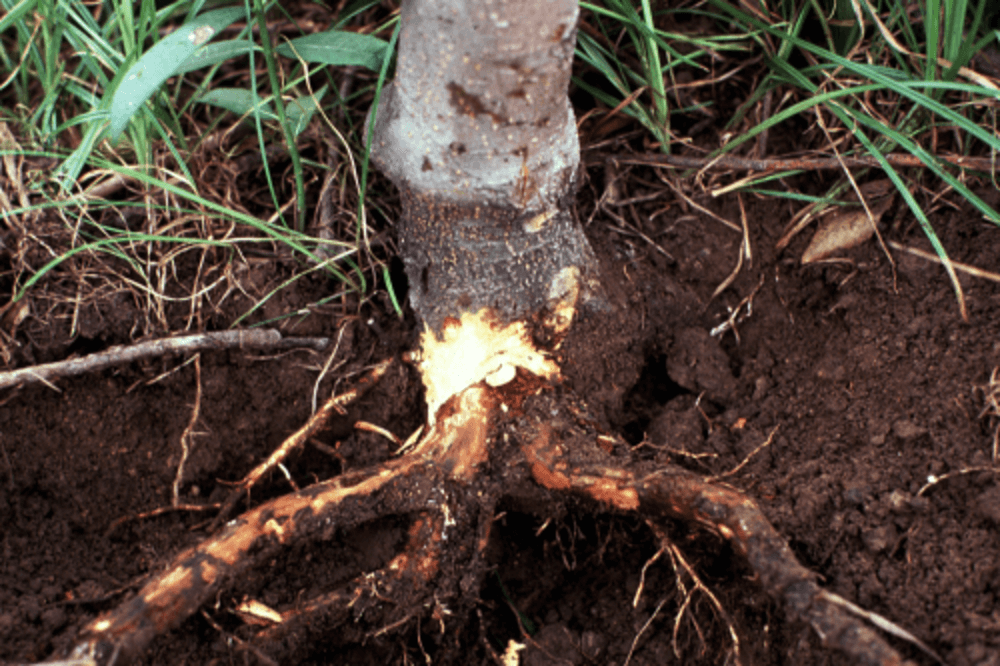There are several parameters that determine the quality of the fruit and its acceptance by consumers. Indeed, it is both external appearance such as colour of the skin and petiole and intrinsic characteristics such as fruit texture and sugar content to which buyers pay particular attention.
However, these qualities are frequently overlooked during the harvesting, packing, transport and storage processes. Water loss, fruit wilting, colour deterioration and stalk discolouration should be prevented through careful post-harvest strategies, as sweet cherries are extremely perishable and have a very short shelf life.
Nowadays, there are various technologies and practices that are used to preserve their quality by improving the consistency of the pulp. In this regard, it has been seen that pre-harvest or at harvest treatments with calcium (Ca2+) and silicon (Si2+) extend the shelf life of cherries.
These treatments reduce respiration and increase flesh firmness, generally increasing resistance to biotic and abiotic stresses. In sweet cherries, calcium is considered a critical nutrient that mainly promotes flesh firmness by working in association with pectin molecules at the cell wall level.
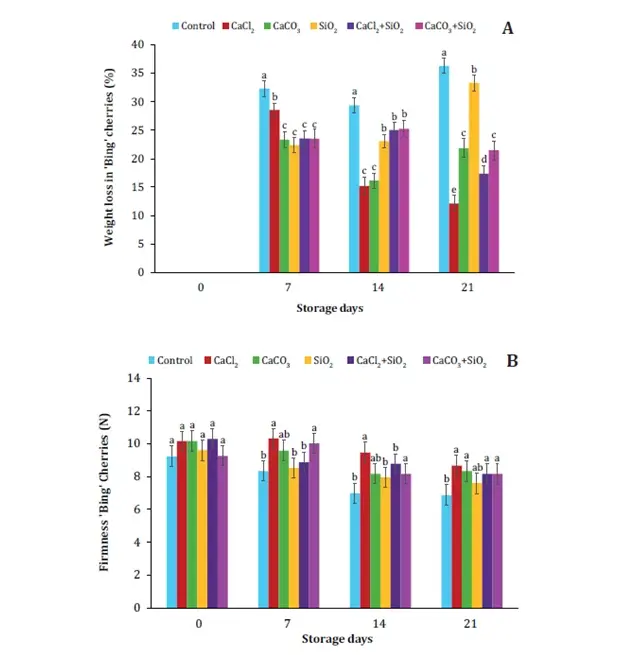 Figure 1. Effect of post-harvest treatments based on calcium (Ca2+) and silicon (Si2+) sources, alone and combined with hydro-cooling on weight loss (A) and firmness (B) in ʹBingʹ sweet cherries during storage at low temperature. Source: Maya-Merazet al., 2024.
Figure 1. Effect of post-harvest treatments based on calcium (Ca2+) and silicon (Si2+) sources, alone and combined with hydro-cooling on weight loss (A) and firmness (B) in ʹBingʹ sweet cherries during storage at low temperature. Source: Maya-Merazet al., 2024.
Calcium chloride (CaCl2) is the most frequently used source of calcium, both in pre-harvest and post-harvest, as it helps preserve fruit quality and reduces physiological disorders such as cracking. Another lesser-known source of calcium for agriculture is calcium carbonate (CaCO3) which, when tested on ‘Shiraz’ grapes, was shown to improve berry firmness.
On the other hand, silicon (Si2+), although not considered an essential element for plant nutrition, has been proposed as a protective measure against biotic and abiotic stresses. Silicon improves the extensibility of plant cell walls and increases the strength and rigidity of plant tissues.
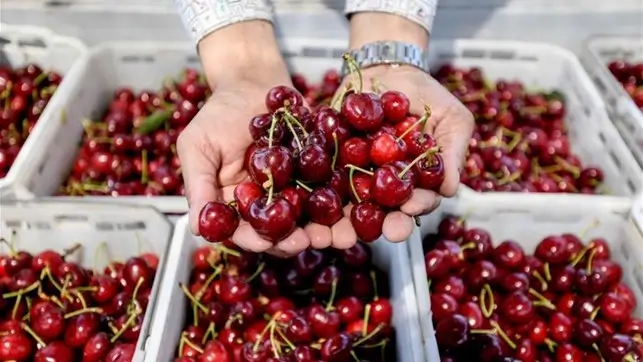 Figure 2.
Figure 2.
The study conducted in Chihuahua (Mexico) evaluated the physico-chemical characteristics of cherries cv. Bing cherries during storage at low temperature (4°C) by testing the application of calcium (CaCl2 and CaCO3) and silicon (SiO2) either alone or in combination by immersion in hydro-cooling (0°C).
The weight loss of the sweet cherries was reduced while maintaining firmness and acidity in all interventions based on Ca2+ and Si2+ alone. The results also indicate that the colour of the skin and flesh of the cherries was substantially influenced by hydro-cooling, either used alone or in combination with Ca2+ and Si2+ treatments.
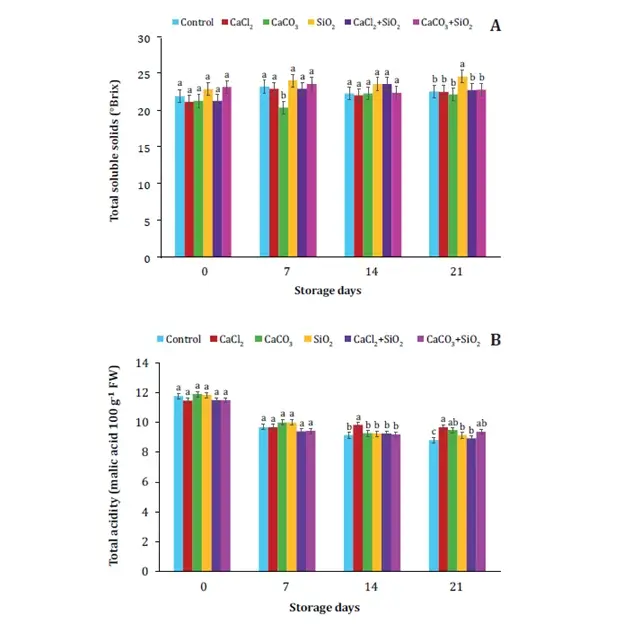 Figure 3. Effect of post-harvest treatments of calcium (Ca2+) and silicon (Si2+) sources alone and/or combined with hydro-cooling on total soluble solids (TSS; A) and titratable acidity (TA; B) in ʹBingʹ sweet cherries during low-temperature storage. Source: Maya-Merazet al., 2024.
Figure 3. Effect of post-harvest treatments of calcium (Ca2+) and silicon (Si2+) sources alone and/or combined with hydro-cooling on total soluble solids (TSS; A) and titratable acidity (TA; B) in ʹBingʹ sweet cherries during low-temperature storage. Source: Maya-Merazet al., 2024.
The CaCl2-treated cherries showed an exceptionally intense red colour due to the increased chromaticity in the treated fruits. In addition, the Ca2+ treatments led to an increase in flesh firmness and acidity values during storage, whereas the silicon oxide treatments resulted in an increase in sugar content.
Therefore, the post-harvest strategy of combining hydro-cooling with Ca2+ and Si2+ interventions could be a promising approach to preserve the desired physicochemical characteristics of sweet cherries during storage at low temperatures.
 Figure 4.
Figure 4.
Source: Irma Ofelia Maya-Meraz, Manuel Francisco Díaz-Calzadillas, María Fernanda Ruiz-Cisneros, José de Jesús Ornelas-Paz, Claudio Rios-Velasco, David I. Berlanga-Reyes, Daniel A. Pérez-Corral, Rodrigo Alonso-Villegas, Effects of postharvest treatments based on calcium and silicon in hydro-cooling on the basic quality attributes of ʹBingʹ sweet cherries (Prunus avium L.) during storage, Revista de la Facultad de Ciencias Agrarias UNCuyo, 2024. https://revistas.uncu.edu.ar/ojs/index.php/RFCA/article/view/7558.
Images: Portal Agro Chile; SL Fruit Service
Melissa Venturi
University of Bologna (IT)
Cherry Times - All rights reserved









